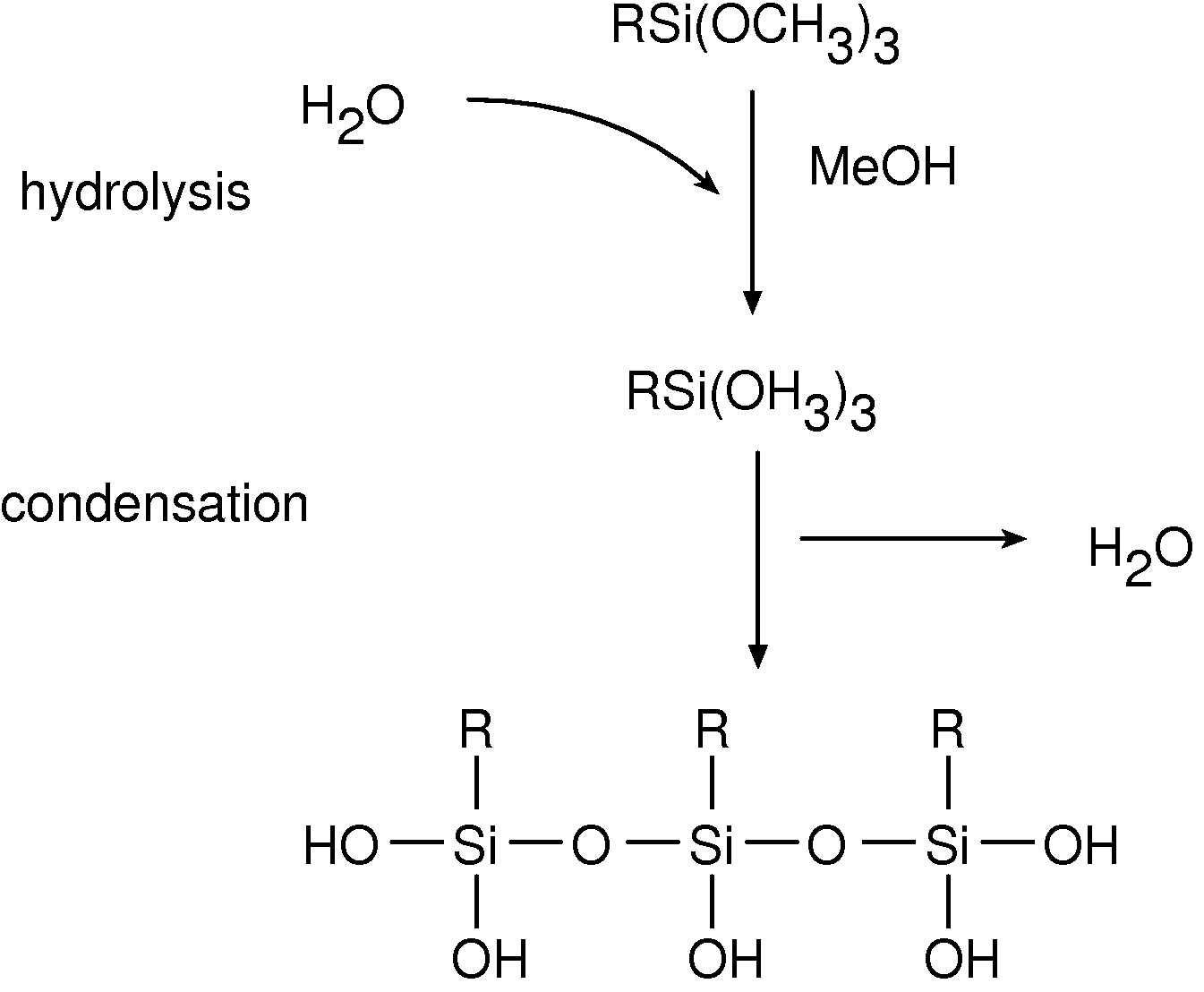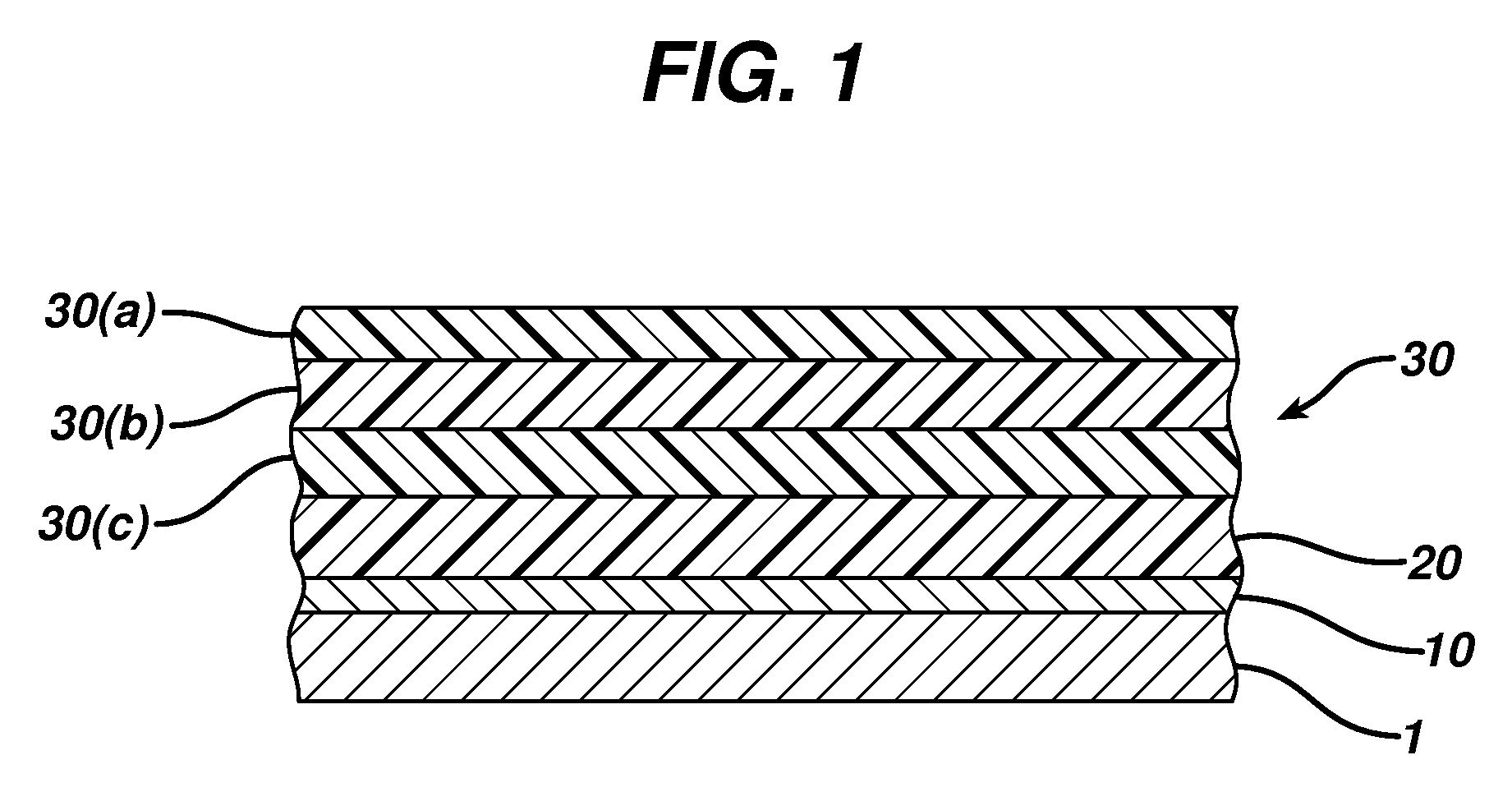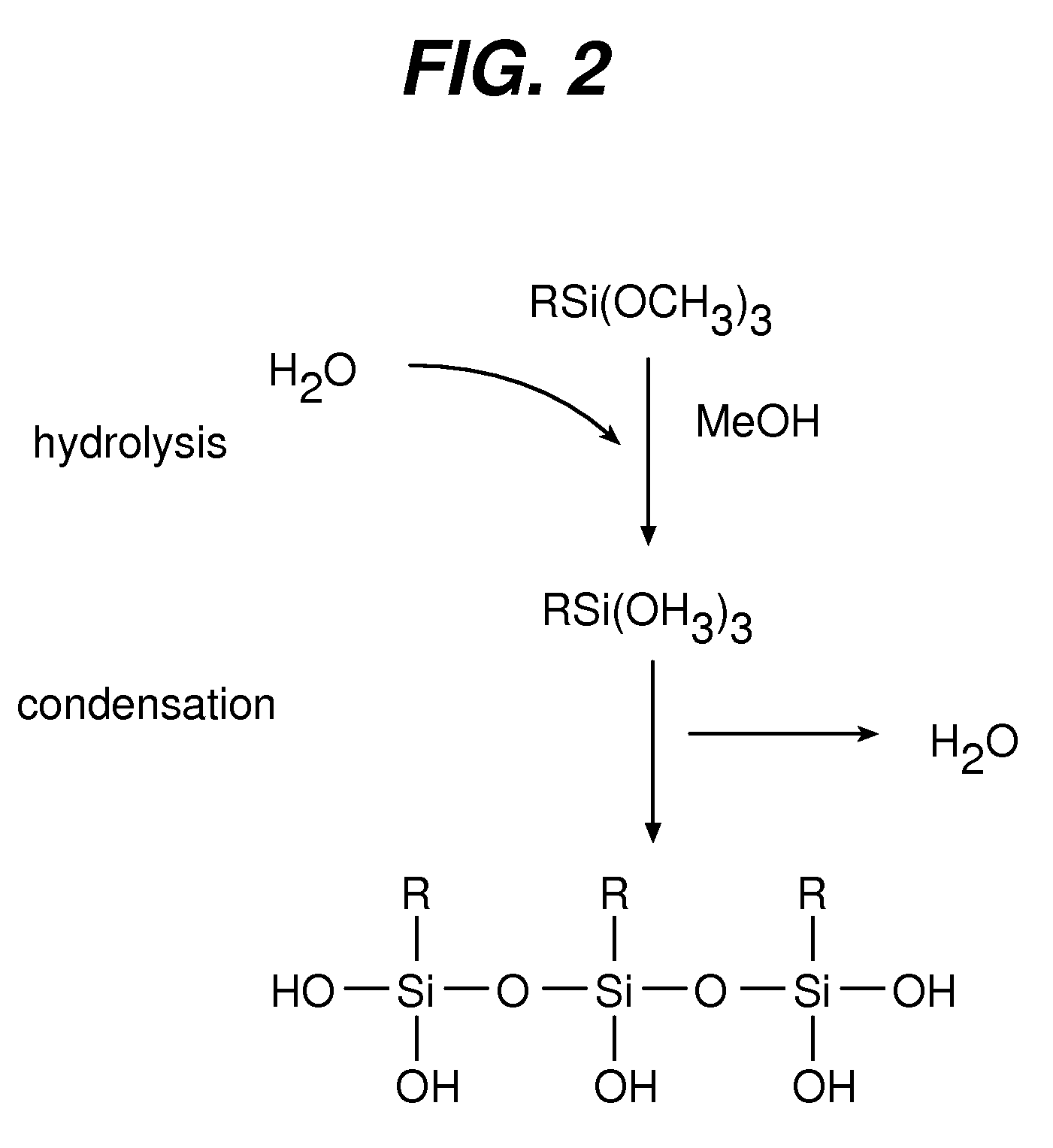Crosslinked silane coating for medical devices
a technology of medical devices and silane, applied in the direction of prosthesis, transportation and packaging, surgery, etc., can solve the problems of increased risk of infection, increased risk of fibrous encapsulation, and inability to meet the needs of patients, and achieve the effect of double the density of functional groups on the surfa
- Summary
- Abstract
- Description
- Claims
- Application Information
AI Technical Summary
Benefits of technology
Problems solved by technology
Method used
Image
Examples
Embodiment Construction
[0029]Polymer coating can improve the performance of a medical device by providing a biocompatible interface between the metal surface and the surrounding tissue, while the biological response of the organism, namely the local response of the surrounding tissue, can be modulated by sustained release of a suitable biologically active agent(s). A thin polymer layer, that does not significantly affect mechanical properties of the device and that provides for a long-lasting matrix reservoir for a biologically active agent(s) to be released in a controlled manner, can be produced by a successive deposition of chemically compatible polymers on the metal surface of the implantable device.
[0030]An activating silane derivative interfacing the metal surface is bound to the metal surface to activate the surface and provide for suitable functional groups. Second, a polymer (first) layer is bound, for example covalently, to the activating layer. The covalent bond of the first polymer layer provi...
PUM
| Property | Measurement | Unit |
|---|---|---|
| thickness | aaaaa | aaaaa |
| weight | aaaaa | aaaaa |
| weight | aaaaa | aaaaa |
Abstract
Description
Claims
Application Information
 Login to View More
Login to View More - R&D
- Intellectual Property
- Life Sciences
- Materials
- Tech Scout
- Unparalleled Data Quality
- Higher Quality Content
- 60% Fewer Hallucinations
Browse by: Latest US Patents, China's latest patents, Technical Efficacy Thesaurus, Application Domain, Technology Topic, Popular Technical Reports.
© 2025 PatSnap. All rights reserved.Legal|Privacy policy|Modern Slavery Act Transparency Statement|Sitemap|About US| Contact US: help@patsnap.com



